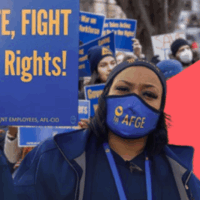Our last blog post discussed how President Obama’s FY 2017 budget proposal includes federal benefit standards and modernization incentives designed to improve state unemployment insurance (UI) programs. Beyond these claimant-side state reforms, the budget proposal includes other key elements that prepare the federal-state UI program for the next recession and reduce the chances of continuing program retrenchment in the coming years. Below, we take a closer look at these other important budget features.
Reforms to UI benefit extension program
The UI program proposals in the FY 2017 budget (see page 21) feature much-needed changes to the Extended Benefits (EB) program. Established in 1970, EB is a permanently-authorized federal-state program that provides additional weeks of benefits to claimants who exhaust their regular UI benefits. The EB program has long been unused due to its rigid activation criteria and a questionable financing structure that requires state programs to split the costs of extensions 50/50 with the federal government. The main EB “trigger” requires that a relatively high percentage of a state’s unemployed workforce receive UI benefits, and that it remain significantly higher than prior years to avoid triggering off. As a result of these restrictions, EB has rarely triggered on since the late 80s and Congress has instead passed federally-funded, temporary extensions. Waiting for Congress to step in and create these ad hoc extensions has produced another set of problems regarding timing, budget trade-offs, and partisan division. Meanwhile, informed observers have noted the key economic role of automatic stabilizers, including UI benefits, as a way to cushion economic shocks during a recession.
The administration’s EB proposal is for a four-tiered program of 13 weeks each, translating to a total of 52 weeks in states with the highest unemployment rates. The EB program would be permanently authorized and federally funded. Crucially, the administration’s proposal standardizes and loosens the trigger criteria that will start extensions within a state. The redesigned program would offer a 13-week tier once a state’s total unemployment rate equals or surpasses 6.5 percent, establish a second tier at 7.5 percent, add a third tier at 8.5 percent, and pay the full four tiers of 52 weeks in states with rates at 9.5 percent or more.
An alternative EB trigger mechanism in the proposal ensures that states would also qualify for extensions whenever the sum of the state’s current unemployment rate and the percentage-point increase in the unemployment rate over any of the prior two years reaches any of the trigger thresholds. For example, a state whose unemployment rate rises from 4.2 percent to 5.5 percent over the previous two years would offer a 13-week extension, because its current rate of 5.5 percent plus the 1.3-percentage-point increase would exceed the 6.5 percent trigger level. Combined with the mandatory use of total unemployment rates going forward, this alternative trigger mechanism furnishes a well-designed EB program, leaving long-term jobless workers in a much less vulnerable position during future recessions.
Renewing incentives for work-sharing, a proven layoff aversion strategy
Work-sharing (or short-time compensation) is a UI program that helps employers avoid layoffs. Under work-sharing, UI benefits partially compensate individuals who usually experience a day (or two) per week of unemployment under the arrangement. For example, if an employer of 100 people needed to reduce production by 20 percent, under a traditional approach 20 employees would typically be laid off. With work-sharing, each employee would have one day a week off and receive UI to partially replace wage losses for that day, avoiding a full layoff of any employee by sharing the available work. Once business conditions recovered, participants could resume their regular work schedules.
Work-sharing was promoted in 2012 legislation that established a new federal version of the program, and provided federal incentives in the form of state UI trust fund reimbursements for benefits and administrative grants for states (see details here and here). Despite these expired incentives, 22 states still do not operate work-sharing programs (see details here). The administration’s budget proposal offers states that have not yet accepted work-sharing incentives a renewed two-year period to accept the unused incentives authorized in 2012. In addition, they propose to “sweeten the pot” on work-sharing by offering to cover half of future benefit costs during recessions, whenever Extended Benefits are activated in a state. Work-sharing is a tool that states and employers can use, but only if states adopt it. Hopefully, the incentive approach offered in the budget will produce progress.
Essential state financing proposals
The budget also includes solid proposals to improve state financing, one of the key shortcomings leading to state-level cuts. There are three main lessons about UI financing evident from the Great Recession and the years since. First, left to their own devices, a significant number of states will not voluntarily put enough money in their UI trust funds prior to the next recession. According to the U.S. Department of Labor’s most recent annual state UI solvency report, half of states had UI reserves of at least one-half the recommended level (as of July 2015), but a number of large states remain with low reserves or outstanding loans. Second, as noted by NELP in 2012, having recommended trust fund reserve levels would keep most states out of UI insolvency or permit them to borrow much less even during recessions as serious as the Great Recession. Third, when states get caught with insufficient trust fund reserves in a recession, state legislatures avoid imposing higher payroll taxes on employers by shifting a large share of potential program costs to jobless workers in the form of UI eligibility restrictions and benefit cuts.
The UI budget package includes well-reasoned measures to avoid a repetition of widespread state insolvency in the next recession. Without getting too far into the weeds of UI financing (which you can learn more about here and here), the administration’s proposal on state UI financing can be summarized by explaining its three key provisions. First, it will raise the portion of wages subject to UI payroll taxation (known as the taxable wage base, or TWB) and then index the TWB to grow with inflation. This would result in states having to raise their TWBs while placing UI on a much broader financial base. Second, the budget imposes a minimum state UI tax rate for the first time, ending the practice of zero or near-zero minimum state UI taxes. The third element of the UI financing proposals kicks in automatic increases in the federal portion of UI payroll taxes (known as FUTA credit reductions) if a state has UI trust fund reserves of less than half the recommended levels in two consecutive years. Currently, these federal backstops don’t kick in until a state trust fund is insolvent for two consecutive years. In effect, this early imposition of higher federal UI taxes will replenish state trust funds even if state legislatures fail (or refuse) to do so.
In summary, when combined with federal benefit standards and incentives discussed in an earlier blog, permanently-authorized extensions, work-sharing incentives, and UI financing reforms furnish an ample basis for characterizing the FY 2017 UI budget package as a progressive benchmark for future UI reform discussions. Meanwhile, the elements of the budget’s UI package furnish state-level advocates with some targets for action despite their expected rejection in this year’s Congress.




